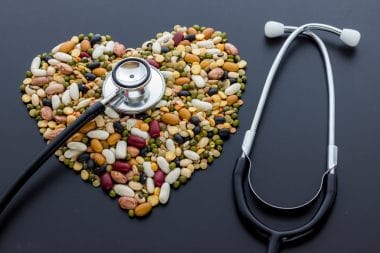Written by Amy Chang
Since the beginning of time, alcohol consumption has been a part of our social human culture. According to the World Health Organization (WHO), half the global population drinks alcohol. Most adult drinkers enjoy alcohol in moderation, with 10-15% being more chronic, heavy drinkers who are at risk of dangerous health implications.
But are moderate social drinkers putting themselves at risk too? How much alcohol is too much? How exactly does alcohol cause long term harm in the body? Does gender and age matter? What can be done?
Research has been mixed, with some studies claiming health benefits associated with light-to-moderate drinking among middle-aged and older people. These benefits include lower risk of heart disease, stroke, and type-2 diabetes. Unfortunately, many studies also show that the overall negative effects of alcohol far outweigh the potential protective benefits. A December 2016 report by the Swedish Society of Medicine estimates that nearly 30% of cases of alcohol-induced cancer in Sweden are due to moderate or low levels of alcohol consumption. Additionally, physical activity and healthy diet provide even better positive outcomes than any of the benefits that alcohol consumption may possibly provide.
Does Alcohol Consumption Cause Cancer?
As of 2016, the International Agency for Research on Cancer (IARC) concluded there is sufficient evidence that alcohol causes cancers of the mouth, throat, larynx, esophagus, liver, colon and rectum, female breast, and stomach. The risk does not seem to vary based on type of alcohol consumed (i.e., beer or wine versus spirits, etc.) Most studies show a positive linear relationship whereby the risk of cancer increases as alcohol consumption increases. The cancer risk also tends to rise greatly as alcohol and tobacco are consumed together, in particular for cancers of the upper respiratory and digestive tract.
According to WHO, alcohol consumption is the second largest contributor to the global burden of cancer, second only to tobacco use. In recent decades, alcohol-attributable cancer has increased to 6% of total cancer cases and deaths. Alcohol-attributable cancer cases are particularly high in the Western Pacific (East Asia, Australia, etc.), European, and South-East Asia WHO regions. Global cancer projections are expected to exceed 20 million new cancer cases annually by 2025. An example of this rising trend is Sweden. In Sweden in 2014, 4% of all cancer deaths and 10% of breast cancer deaths were found attributable to alcohol. The overall number of alcohol-attributable cancer deaths in Sweden had increased by 7% since 2001.
Does Alcohol Negatively Impact Certain Populations More?
Alcohol is more damaging to women than men. Women have a smaller percentage of water in the body, resulting in a higher concentration and level of toxicity (i.e., blood alcohol content). The liver enzymes required to break down alcohol are also produced in smaller quantities in women, which causes alcohol to take longer to leave the body. Alcohol can also increase the levels of estrogen and androgen in women, which may promote the development of breast cancer.
Alcohol is also more damaging to young adults. The brain continues to develop until age 25 and alcohol interferes with brain development. Adolescent brains are especially susceptible to alcohol damage. Drinking alcohol at a young age also increases the risk of alcohol dependence later in life.
Approximately 40% of East Asians have a genetic condition called ALDH2 Deficiency where the ALDH2 liver enzyme is weakened and cannot efficiently break down the toxic acetaldehyde byproduct from alcohol. This toxic accumulation of acetaldehyde causes the symptoms of Alcohol Flush Reaction (also known as Asian Glow and Asian Flush). Acetaldehyde accumulation is dangerous because it creates oxidative damage and stress to cells and DNA, and is a driver of cancer. About 1 billion people worldwide have ALDH2 Deficiency and experience higher than average rates of esophageal cancer (2x to 70x more), liver cirrhosis (3x more) and Alzheimer’s (1.5x more). The ALDH2 Deficient population is expected to grow since the gene mutation is dominant and passed from generation to generation.
How Does the Body Metabolize Alcohol?
When drinking alcohol, up to 8 percent is lost through urine, sweat, or the breath. The remaining ethanol in alcohol is first metabolized by the body’s ADH (alcohol dehydrogenase) enzymes and converted into highly toxic acetaldehyde. Bacteria in the mouth, esophagus and intestines also converts some of the ethanol into acetaldehyde. Next, the body’s ALDH (aldehyde dehydrogenase) enzymes break down the acetaldehyde into a less active byproduct called acetate, which can be eliminated from the body as water and carbon.
What are the Specific Dangers of Acetaldehyde?
Both alcohol and acetaldehyde (byproduct of alcohol) are highly toxic and considered Group 1 carcinogens by WHO. Acetaldehyde promotes cancer by interfering with the copying or replication of DNA and by inhibiting a process by which the body repairs damaged DNA. This compromises the body’s ability to accurately regenerate itself, and is considered the primary cause for the start of tumors and development of cancer. Alcohol and acetaldehyde can also promote the growth of existing tumors because of its toxic effect on cells which may cause uncontrolled growth of cells and production of free radicals which can damage DNA.
The risk of cancer increases greatly when alcohol and tobacco are consumed together. This is because acetaldehyde enters the body in highest concentration through alcohol consumption, and secondly through cigarette smoking. Unfortunately, acetaldehyde is found everywhere in our modern environment, including air pollution (indoor and outdoor) and everyday foods and diet such as coffee, tea, fruits, and high-sugar foods.
Is There a Safe Level for Drinking Alcohol?
According to WHO, there isn’t really a “safe” level for drinking alcohol because evidence shows that the ideal health situation is to not drink at all. Alcohol is closely related to about 60 different diagnoses, most having a close relationship whereby the more you drink, the higher your risk of disease. In a nutshell, less is better.
Europe has the world’s highest levels of alcohol consumption and alcohol-related harm. Alcohol is one of the region’s leading causes of poor health and premature death. The Swedish Society of Medicine estimates that nearly 30% of cases of alcohol-induced cancer in Sweden are due to moderate or low levels of alcohol consumption, and that the more a person consumes, the greater the risk.
Studies show that even very low levels of alcohol consumption can affect a person’s health. Alcohol affects the entire body because it is both fat and water soluble and can enter every organ in the body. Alcohol increases the permeability of cells, enabling other toxins to also enter the cells, which can not only cause cancer, but also affect other metabolic processes. A person’s sensitivity to alcohol is highly individual and hard to predict because any genetic predisposition for a health condition can be worsened by alcohol.
Alcohol consumption can weaken the body’s immune system by reducing the number and ability of immune cells to attack cancer cells as they develop. This weakened immunity can increase the risk of cancer. As cancer develops, alcohol consumption may contribute to inflammatory and immunosuppressive environments, enabling more tumor cells to grow and spread. Alcohol-related cancers can be difficult to treat because ethanol interferes with chemo treatment, causing lower response to medication and more side effects.
What Can I Do to Protect My Health? Is Cancer Risk Reversible?
Less alcohol is better, when it comes to reducing cancer risk. The increased risk of cancer from alcohol consumption is reversible by not drinking, but it can take decades. For mouth and throat cancer, it may take more than three decades to reach a level equivalent to that of non-drinkers. For larynx cancer, it takes two decades to reverse. For esophageal cancer, it takes 15-20 year to reverse.
People with a genetic predisposition to cancer should consider limiting their alcohol consumption. Additionally, the 1 billion Asian people worldwide with ALDH2 Deficiency should consider limiting alcohol consumption since they have higher than average rates of esophageal cancer (2x to 70x more), liver cirrhosis (3x more) and Alzheimer’s (1.5x more). They may also want to take a daily vitamin supplement product that reduces everyday acetaldehyde accumulation in the body, such as Essential AD2 by Delta Nutrassentials. Specially formulated and clinically-proven, the combination and concentration of ingredients in Essential AD2 work together to (1) increase the activity of the ALDH2 Deficient enzyme, (2) react directly with the acetaldehyde toxin to clear it out, and (3) boost natural metabolism.
There are some people who try to address their Alcohol Flush Reaction by taking antacids or antihistamines, but this off-label use is not recommended by the medical community. Antacids and antihistamines may reduce facial redness, but do not reduce toxic acetaldehyde accumulation. In fact, they may do the opposite and suppress metabolic activity further, resulting in potential alcohol poisoning. When combined with alcohol, antacids may also damage the stomach.
Aside from the reduced risk of cancer, there are many other benefits experienced from giving up alcohol, even by moderate drinkers. Immediate benefits include better sleep and feeling more refreshed and alert the next day. Additionally, non-drinkers also find weight management to be much easier as well.
Citations:
https://health.spectator.co.uk/moderate-drinkers-dont-stop-the-health-benefits-are-clear-the-cancer-risk-is-not/
https://iogt.se/wp-content/uploads/Alkohol-och-cancerrapport-2016_ENG.pdf
https://www.euro.who.int/en/health-topics/disease-prevention/alcohol-use/data-and-statistics/q-and-a-how-can-i-drink-alcohol-safely
https://pubs.niaaa.nih.gov/publications/aa72/aa72.htm
About Amy Chang
CEO of Delta Nutrassentials
Amy is committed to the mission of Delta Nutrassentials (www.deltanutra.com) to create products that provide an everyday path to realigning our health to greater balance and harmony. An example is Essential AD2, which is clinically designed and proven specifically to address ALDH2 Deficiency and reduce acetaldehyde accumulation. 40% of Asians globally have ALDH2 Deficiency, and Amy is one of them. She is very passionate about spreading awareness worldwide about this genetic condition, with the goal of improving our health and enjoying better lives.







Reply